British Shorthair with Silver, Golden, and Chinchilla Coloration
November 4, 2022
British Shorthairs may exhibit silver, golden, and chinchilla colorations — though they are not common in the breed. Learn about the genetics behind these unique coats.
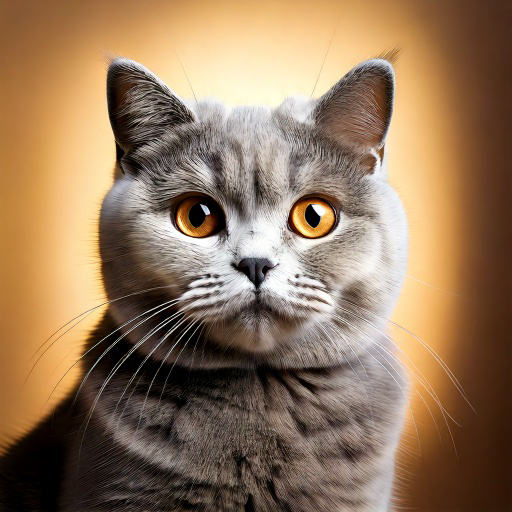
British Shorthair with Silver, Golden, and Chinchilla Coloration
Introduction: The Shine of Silver, Golden, and Chinchilla
While less common in the British Shorthair breed, silver, golden, and chinchilla colorations are highly prized for their elegance and rarity.
In this article, you’ll learn how these coat colors develop, the genetic factors behind them, and why they captivate breeders and feline enthusiasts alike.
1. Silver and Golden Coloration
The silver and golden hues are the result of a gene that modifies the cat’s natural pigmentation, creating a delicate shimmering effect.
🧬 The Silver Gene
- A dominant gene that suppresses pigmentation along the hair shaft.
- Creates a white (or light) base, with only the tips of the hairs pigmented.
- Seen in both tabby (agouti) and solid (non-agouti) cats — known as smoke in solids.
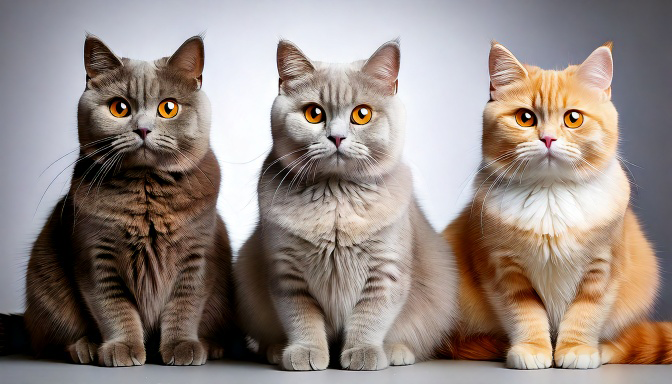
Visual comparison between silver, golden, and chinchilla colorations in British Shorthair cats.
2. Types of Silver-Based Coloration
▪ Smoke
- Appears solid at first glance.
- Under light or motion, reveals white roots beneath the darker topcoat.
▪ Shaded
- About one-third of the hair length is pigmented.
- Creates a soft, shaded appearance, especially noticeable on the legs and tail.
▪ Shell
- Only one-eighth of the hair is pigmented.
- Produces the lightest, most ethereal effect.
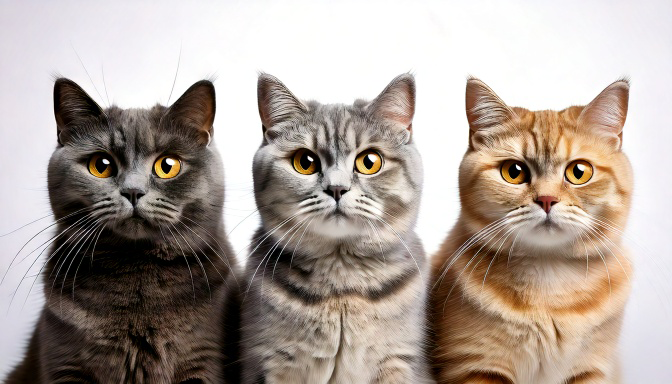
Comparison of three British Shorthair cats: smoke, shaded, and shell — each showing different levels of pigmentation.
3. The Wb Gene and the Chinchilla Coloration
The Wb gene (Widening of Band) expands the lighter zones of the agouti pattern, resulting in the distinctive chinchilla appearance.
Genotypes:
WbWb→ results in shaded or shell coats.wbwb→ maintains the traditional agouti tabby pattern.
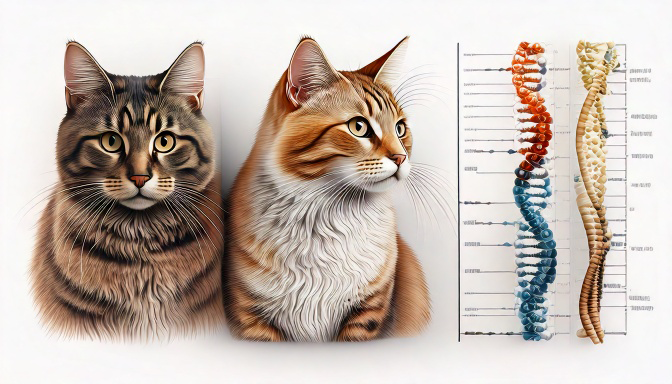
Visual explanation of how the Wb gene affects coat appearance.
Visual Characteristics:
- Chinchilla kittens may initially show a slight "ghost tabby" mask.
- As they mature, the markings fade, revealing a uniform light coat.
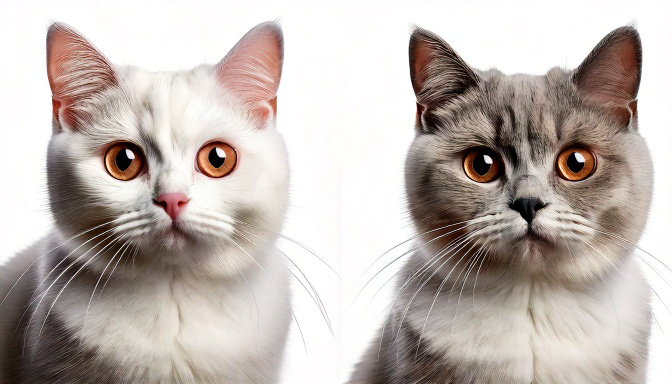
British Shorthair kitten with ghost mask and adult with defined chinchilla coat.
4. Frequently Asked Questions (FAQ)
What is chinchilla coloration in cats?
It’s a coat pattern where most of the hair is light, with minimal pigmentation at the tips, creating a refined and elegant look.
What’s the difference between shaded and shell?
- Shaded: about one-third of each hair is pigmented, creating a noticeable shading effect.
- Shell: only about one-eighth of each hair is pigmented, resulting in a much lighter appearance.
What is the Wb gene?
The Wb gene alters the agouti pattern, broadening the lighter bands on each hair shaft, and producing stunning effects like chinchilla.
Is this coloration common in British Shorthairs?
No. Silver, golden, and chinchilla colorations are rare in the breed and often result from specific lineages that carry the required genes.
5. Related Articles
- British Shorthair: Bicolor Markings
- British Shorthair Tabby: Agouti and Non-Agouti Genes
- British Shorthair Solid Colors
- Pointed Coloration in Cats
6. Conclusion
The silver, golden, and chinchilla colorations add an extra layer of beauty and exclusivity to the already magnificent British Shorthair.
Their subtle shine and noble appearance make these cats truly unforgettable companions.
This content was produced by British Village
Based on our hands-on experience as specialized breeders of British Shorthairs, combining responsible genetics, passion, and dedication at every step.
